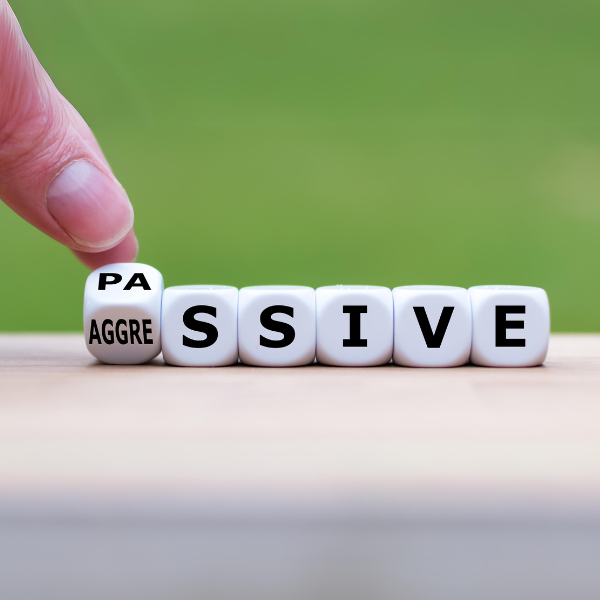
Communication is the backbone of human interaction, but not all forms of communication are created equal. Among the various styles, passive-aggressive communication stands out for its subtlety and often masked hostility. It’s like a poisonous plant disguised as a harmless flower, wreaking havoc on relationships and dynamics. We’ve seen some examples of passive-aggressive behaviour in some of our podcasts, like the listener’s mother-in-law in Episode 113 who would rewash the clean dishes! In this post, we’ll look at what passive-aggressive behaviour is, why it’s harmful, and provide some examples of this often misunderstood form of communication.
Passive-aggressive behaviour is characterized by indirect resistance to the demands or requests of others. Instead of openly expressing their feelings or needs, passive-aggressive individuals resort to subtle, often manipulative tactics to convey their discontent or frustration. This can manifest in various ways, including sarcasm, procrastination, sulking, backhanded compliments, and intentional inefficiency.

One classic example of passive-aggressive behaviour is stonewalling, sometimes known as ‘the silent treatment’. Instead of addressing a conflict directly, an individual may choose to ignore the other person, giving them the cold shoulder as a way of expressing their displeasure without saying a word. While this may seem like a harmless way to avoid confrontation and is sometimes a learned behaviour of those with a history of emotional abuse, it only serves to escalate tensions and prolong the underlying issue.
Another common example is the use of sarcasm or disguised insults. Instead of openly expressing dissatisfaction or offering constructive criticism, a passive-aggressive person may cloak their criticism in humour or sarcasm, making it difficult for the recipient to figure out the true intent behind their words. For instance, instead of expressing their annoyance with a coworker’s behaviour directly, they might make snide remarks or sarcastic comments, leaving the other person feeling confused or hurt.

Indirectly refusing to complete a task or meet someone’s needs is also a hallmark of passive-aggressive behaviour. Instead of refusing outright to complete a task, a passive-aggressive person may delay or sabotage their efforts as a way of expressing their resistance or resentment. This can be particularly damaging in professional settings where deadlines and productivity are paramount, leading to frustration and conflict among team members.
Backhanded compliments are yet another example of passive-aggressive communication. Instead of offering genuine praise, a passive-aggressive person may disguise their criticism as a compliment, leaving the recipient feeling insulted or belittled. For instance, instead of acknowledging a friend’s achievement wholeheartedly, they might say something like, “I wish I could study in my spare time like you but I just work too hard!” or “If only I earned enough to afford a car/house as nice as yours!”

Firstly, it erodes trust and undermines the foundation of relationships. When people are unable to express themselves openly and honestly, it creates a breeding ground for resentment, misunderstanding, and ultimately, distance. Passive-aggressive behaviour often leads to a cycle of conflict and escalation, as unresolved issues continue to fester beneath the surface. It’s controlling, by subtly trying to influence the actions of those around you.
Passive-aggressive communication is unhealthy because it often leaves the recipient feeling confused, embarrassed or ignored. Instead of addressing issues directly and collaboratively and allowing healthy growth to occur, passive-aggressive people use covert tactics that only serve to exacerbate the problem. It also inadvertently silences the recipient; after all, how can someone talk about or fix something they don’t even know is an issue? This not only prolongs the conflict but also prevents meaningful communication and compromise, which are key elements of healthy friendships and relationships.
Communicating through passive-aggression is a destructive pattern that undermines relationships, fosters resentment, and impedes conflict resolution. By understanding the signs and consequences of passive-aggressive behaviour, we can encourage more open, honest, and constructive communication in our interactions with others. Remember, communication is the key to healthy relationships, and passive-aggression is a significant barrier to this.
